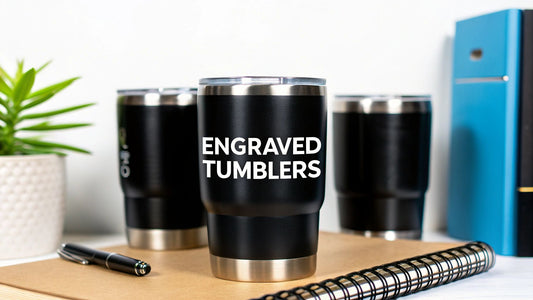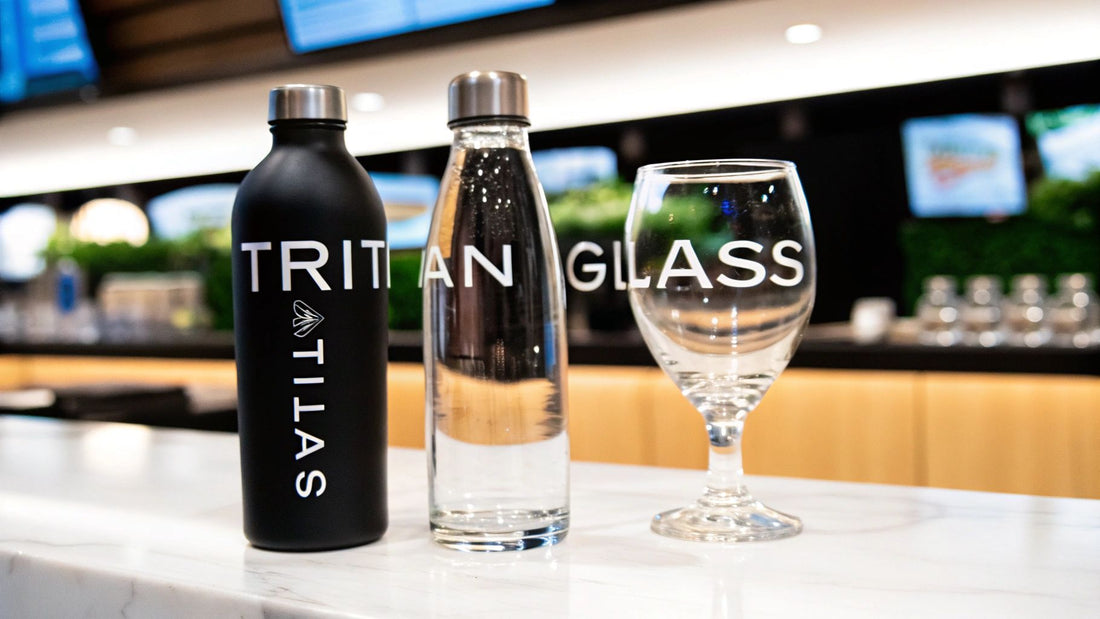
Tritan Plastic vs Glass Your Guide to Smarter Drinkware
When you’re weighing up Tritan and glass, the "right" choice really hinges on what you value most for your brand. If you need something that can handle a bit of rough and tumble, Tritan is the clear winner with its durability and lightweight feel. It’s perfect for outdoor events, festivals, or anywhere you’d worry about breakage.
On the other hand, glass has that undeniable premium touch. It feels substantial and elegant, making it the go-to for high-end corporate gifts or sophisticated functions where making a classy impression is the main goal.
Tritan vs Glass: A Quick Comparison
Choosing between Tritan plastic and glass for your promotional drinkware often boils down to a trade-off between everyday practicality and classic elegance. This quick visual guide puts their weight and resilience side-by-side in real-world terms.
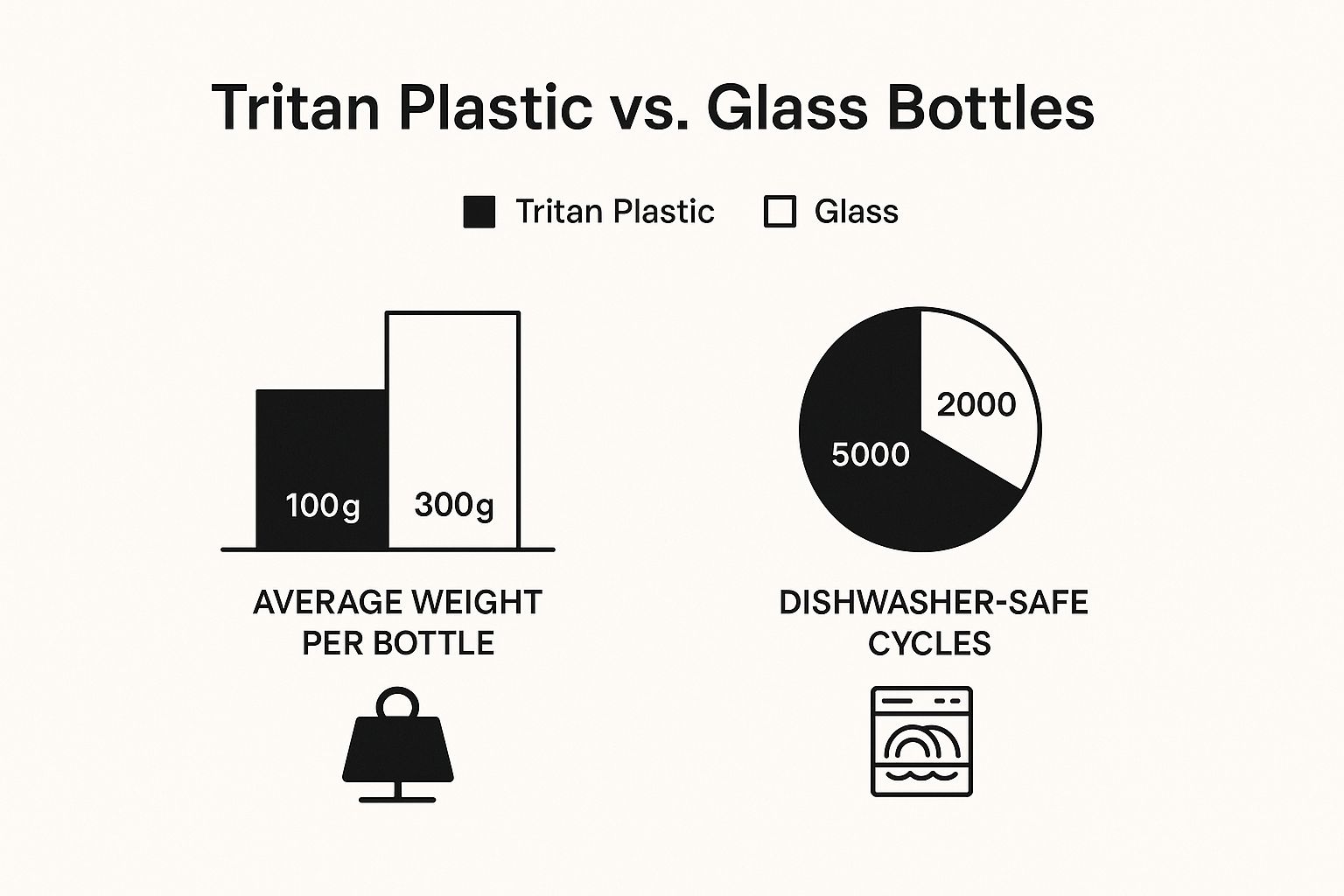
As you can see, the numbers speak for themselves. Tritan is noticeably lighter and can endure more than double the dishwasher cycles. This really underscores its strength as a durable, long-lasting option for daily use.
At a Glance: Tritan Plastic vs Glass
To make the decision even clearer, here’s a quick-reference table that breaks down the key attributes of both materials. It’s a great way to see exactly where each one shines.
| Attribute | Tritan Plastic | Glass |
|---|---|---|
| Durability | Exceptionally shatter-resistant and impact-proof. | Prone to shattering or chipping if dropped. |
| Weight | Very lightweight and easy to carry. | Heavier and more substantial in the hand. |
| Safety | Certified BPA-free, food-safe, and non-toxic. | Naturally inert, non-toxic, and chemical-free. |
| Appearance | Crystal-clear, glass-like clarity. | Classic, pristine look with a premium feel. |
| Longevity | Resists clouding and staining over time. | Can become etched or cloudy with heavy use. |
| Cost | Generally more cost-effective to produce and ship. | Higher material and shipping costs. |
Ultimately, this table confirms the main takeaway: Tritan is your champion for resilience and practicality, while glass remains the undisputed choice for timeless sophistication.
What Exactly Are Tritan and Glass?
When you’re weighing up Tritan plastic vs glass, it helps to know what you’re actually dealing with. Let's start with Tritan. It’s a newer copolyester plastic that has really made a name for itself, primarily because it's incredibly durable while still looking crystal clear, almost like real glass. It's become a favourite for reusable drinkware because it's tough, light, and importantly, BPA-free, which ticks a big box for health-conscious consumers.
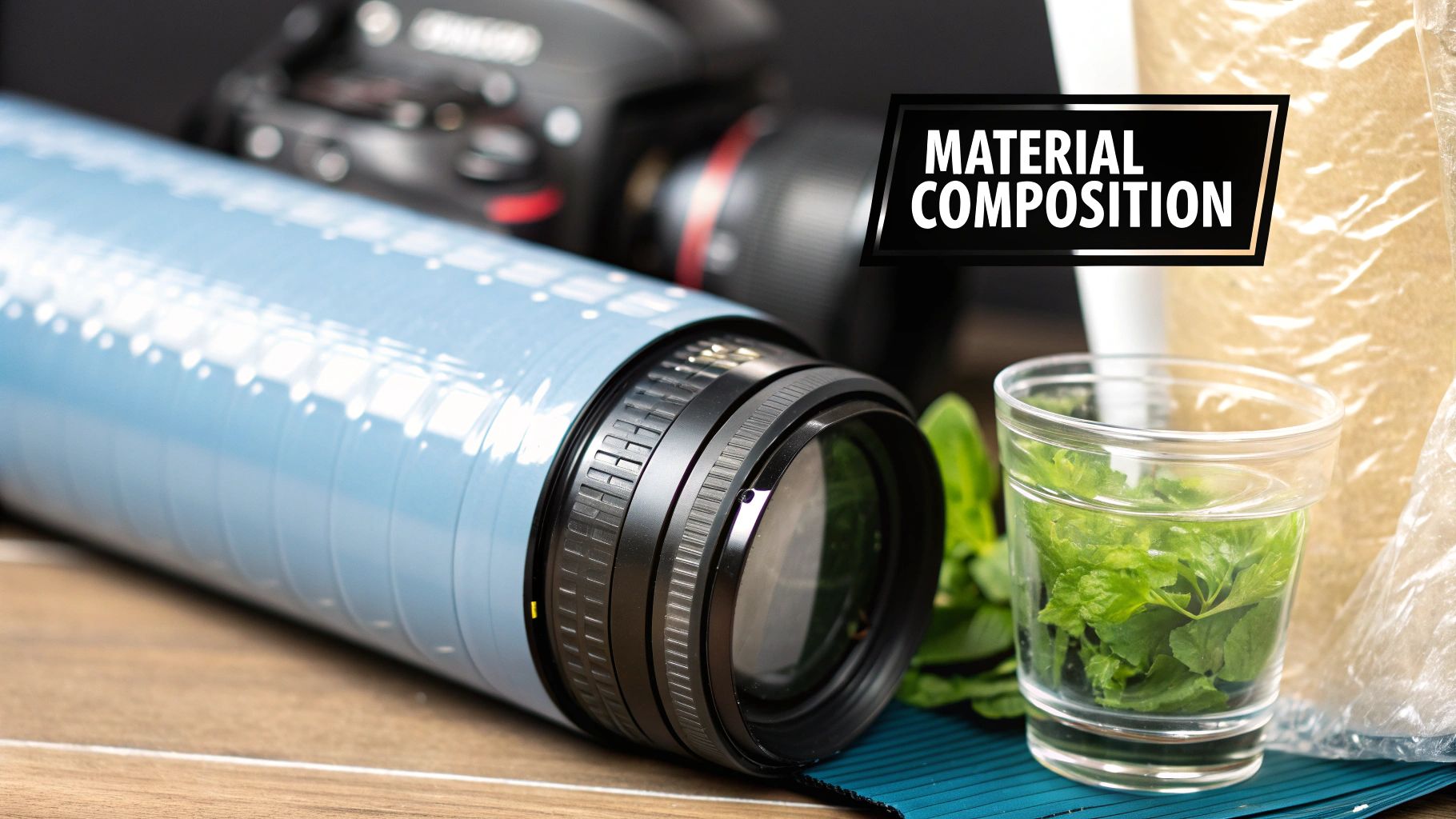
On the other hand, you have glass – the classic, trusted material made from simple, natural elements like sand. People have used it for centuries for a reason. Glass is prized for its purity; it’s chemically inert, which means it won’t interfere with the taste of your beverage. You'll typically find drinkware made from either standard soda-lime glass or the more robust, heat-resistant borosilicate glass.
Durability and Safety in Real-World Scenarios
When you're choosing between Tritan plastic and glass, thinking about how they'll actually be used day-to-day really highlights their differences. Let's get practical.
Picture a Tritan bottle getting knocked off a desk or dropped during a hike. Most of the time, it'll just bounce. Now, imagine the same thing happening with a glass tumbler in a busy office or café – you're left with a dangerous mess of sharp pieces. This simple scenario shows why Tritan's incredible impact resistance makes it a far safer bet, especially in active settings or anywhere kids are around.
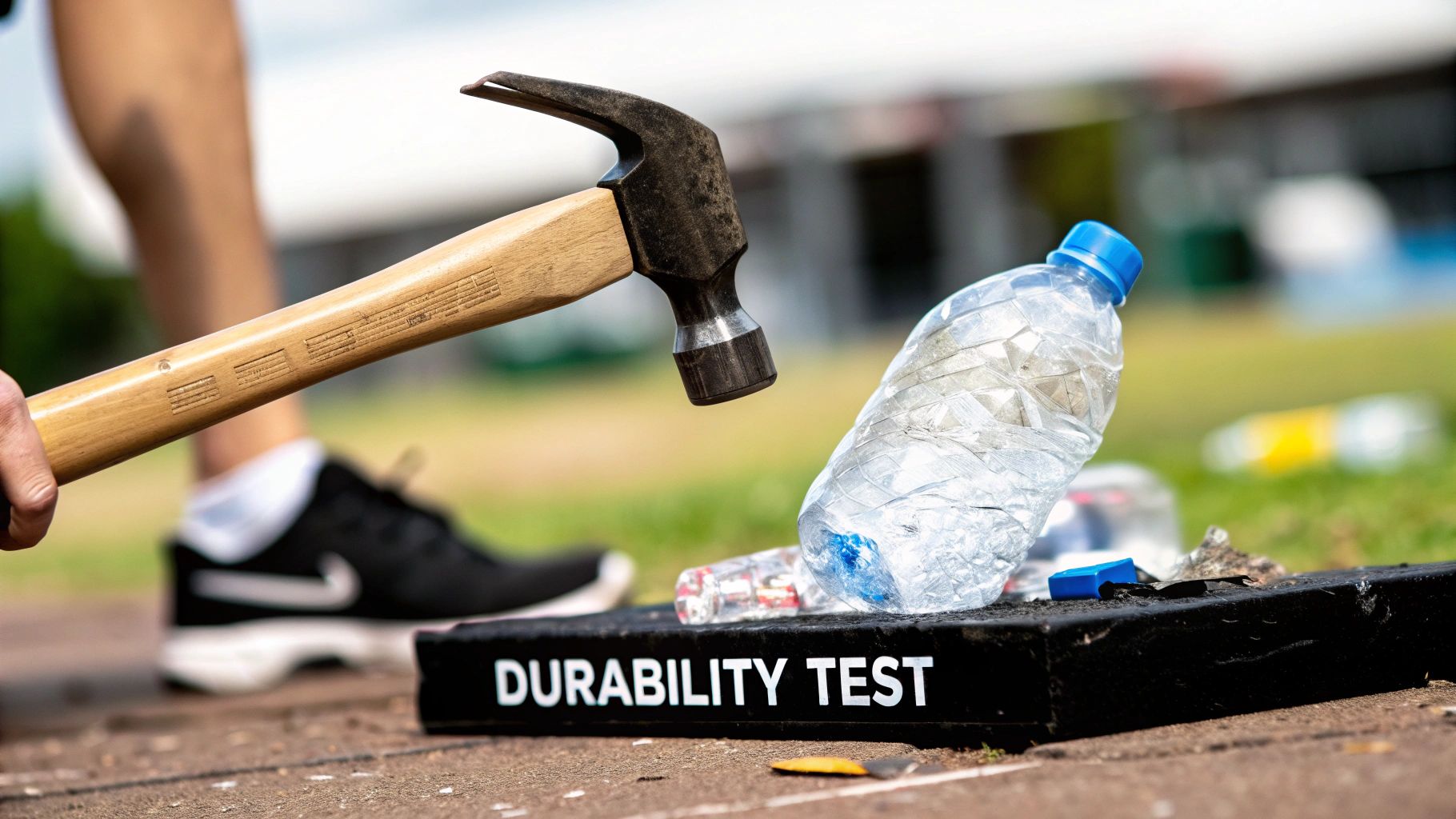
Here in Australia, we've seen a huge rise in Tritan's popularity, and for good reason. It can typically handle drops from about 1.2 metres without so much as a crack, a feat glass simply can't match.
A huge part of its appeal is also its safety from a health perspective. Tritan is famously BPA-free, which directly answers the valid concerns many people have about plastics. While glass is naturally inert and free from chemicals, its tendency to break presents a physical safety risk that you just don't get with Tritan.
Of course, durability is just one piece of the puzzle. For a deeper look at other drinkware features, our guide on vacuum insulated vs double wall options is a great next step.
How Your Material Choice Shapes Your Brand's Image
Don't underestimate the power of a simple promotional product. The material you pick for your drinkware sends a clear message about who you are as a brand. Think of it like a business card or your website design—it’s a physical representation of your company's values and standards.
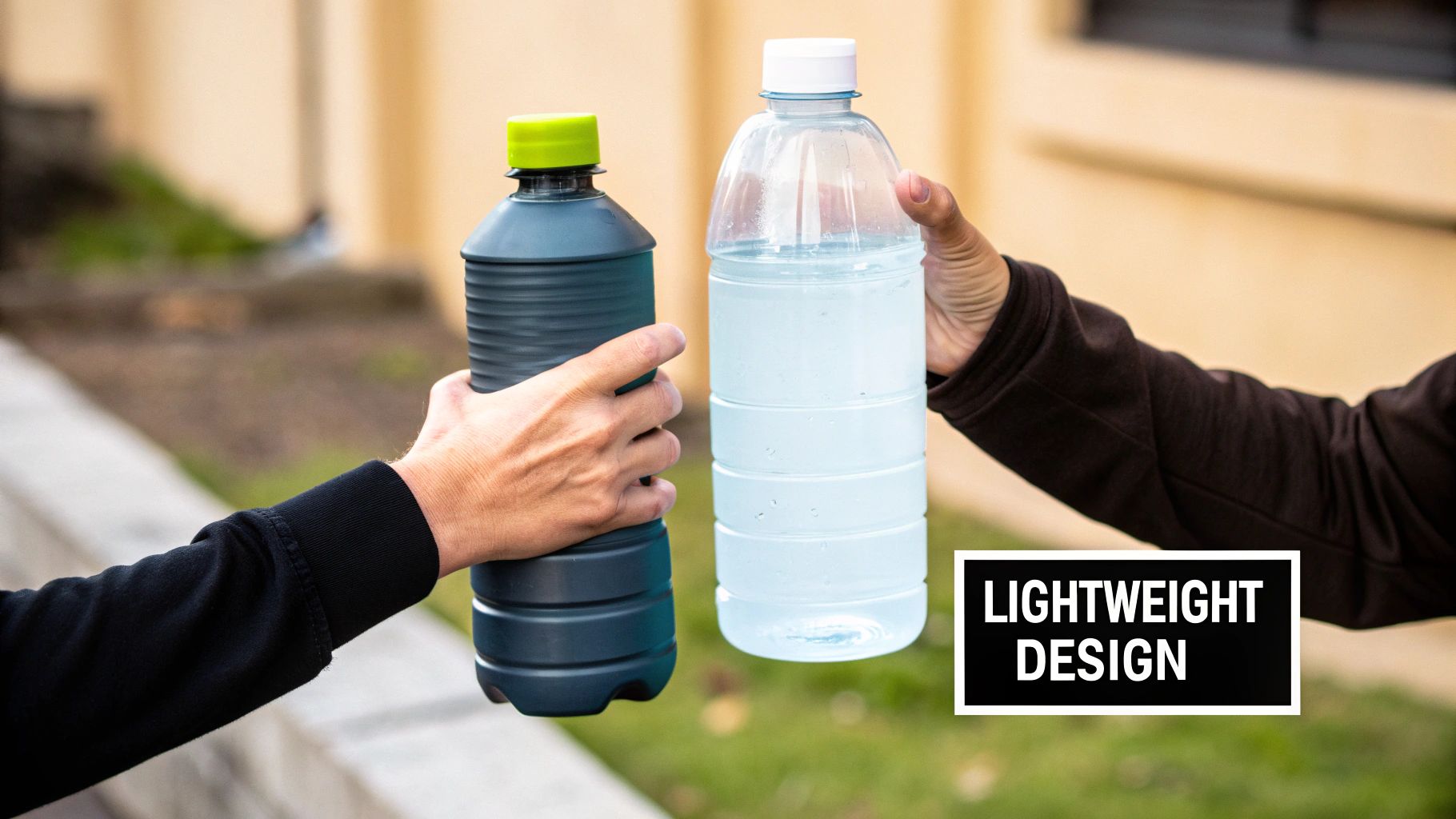
When you’re weighing up tritan plastic vs glass, you’re really deciding what story you want to tell. Tritan, with its impressive clarity and tough-as-nails resilience, screams modern efficiency and dependability. It’s the perfect match for active, forward-thinking brands. Plus, today's printing methods can splash vibrant, full-colour logos onto Tritan, making your brand pop.
On the flip side, glass has an undeniable air of timeless quality. It suggests a commitment to premium standards and tradition. Elegant branding techniques like etching produce a sophisticated, permanent mark that speaks to luxury or environmentally-focused brands.
Getting these small details right is crucial for making a lasting impression. For more ideas on how to make your promotional items stand out, have a look at our tips on ordering promotional pens for maximum impact.
Navigating the Environmental Impact in Australia
When we talk about the environmental side of Tritan plastic versus glass, it's not a simple black-and-white issue. There are definite trade-offs to consider, especially here in Australia.
Glass has a big plus: it's 100% and infinitely recyclable through our well-established kerbside systems. The catch? The actual recycling process chews through a fair bit of energy.
Tritan, on the other hand, is a type 7 plastic, which puts it in a trickier spot for recycling in Australia. Our local infrastructure isn't as geared up for it as it is for common plastics like PET. However, the future looks promising. The Australian recycled plastic market is on a strong growth trajectory, with its value projected to nearly double by 2032. This growth could significantly improve recycling options for materials like Tritan down the track.
The real clincher often boils down to lifespan. Tritan's incredible durability means it simply lasts longer, which cuts down on the waste created from having to replace broken items.
This durability is a massive factor in its overall environmental footprint. It’s a similar line of thinking we apply to other promotional items, like finding sustainable choices for pens, which we cover in our guide on the environmental impact of promotional pens.
So, Which One is Right for Your Brand?
Ultimately, the choice between Tritan plastic and glass isn't about which one is better overall, but which one is better for your specific needs. It really comes down to aligning the material with your brand’s image, who you're giving it to, and how you expect them to use it.
There are definitely times when one is the clear winner. For outdoor events, school functions, or fitness-related promotions, Tritan is the hands-down champion. Its incredible durability and safety make it a no-brainer for active, on-the-go situations.
On the other hand, glass remains the gold standard for premium occasions. Think executive corporate gifts, high-end restaurant branding, or exclusive retail merchandise where creating a perception of luxury and quality is key. Thinking about thoughtful swag items for your team? Our guide can help you decide.
While it’s encouraging that recent research shows a 39% drop in plastic pollution along Australian coastlines, it’s a strong reminder to choose durable, reusable items. This ensures your promotional products are loved and used for years, rather than adding to the waste problem. You can dig deeper into the CSIRO’s findings on coastal rubbish reduction to learn more.
Got Questions? We’ve Got Answers
Still on the fence about whether to go with Tritan or glass for your drinkware? It’s a common dilemma, and we get asked about it all the time. To help you make that final call, we've put together answers to a few frequently asked questions.
If you're also thinking about how to get the best value from your overall marketing spend, you might find our guide on maximising marketing ROI with promotional pens in Australia helpful.

